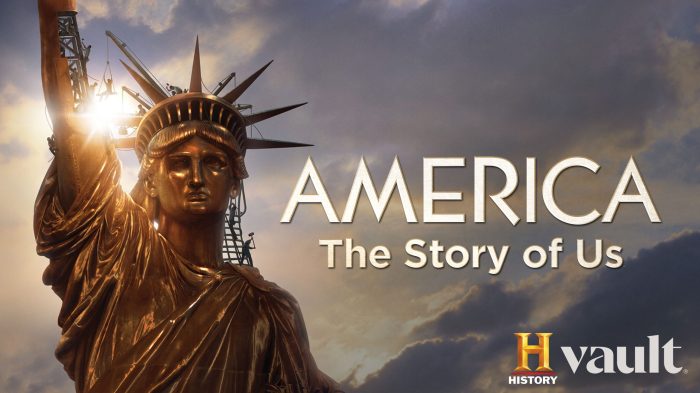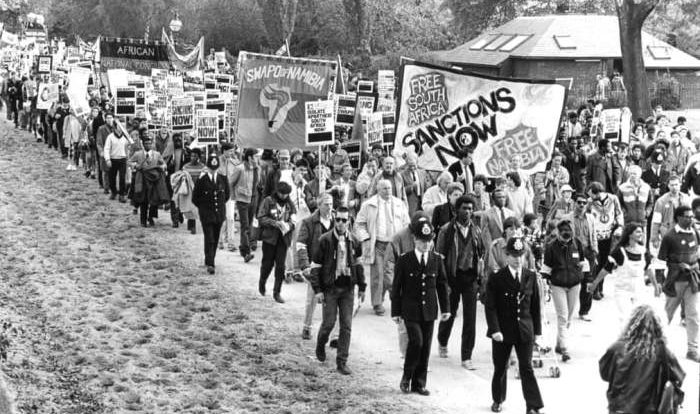America story of us answers – America’s Story of Us Answers embarks on an enthralling narrative, unveiling a tapestry of history, culture, and innovation that has shaped the United States.
From its humble beginnings to its rise as a global superpower, America’s journey is a chronicle of resilience, ingenuity, and unwavering determination.
Historical Context

The history of the United States of America is a vast and complex tapestry woven over centuries of exploration, settlement, revolution, and expansion. It is a story of triumph and tragedy, of progress and setbacks, of a nation constantly striving to live up to its ideals.
The following timeline provides a brief overview of some of the key events that have shaped America’s history:
Timeline of Key Events
- 1492:Christopher Columbus arrives in the Americas, marking the beginning of European colonization.
- 1607:The first permanent English settlement is established at Jamestown, Virginia.
- 1776:The Declaration of Independence is signed, declaring the American colonies’ independence from Great Britain.
- 1789:The Constitution of the United States is ratified, establishing the framework for the American government.
- 1803:The Louisiana Purchase doubles the size of the United States.
- 1812:The War of 1812 is fought between the United States and Great Britain.
- 1846:The United States annexes Texas.
- 1848:The Mexican-American War ends with the United States acquiring California and the Southwest.
- 1861:The Civil War begins, pitting the Union against the Confederacy.
- 1865:The Civil War ends with the Union victory and the abolition of slavery.
- 1898:The Spanish-American War results in the United States acquiring Puerto Rico, Guam, and the Philippines.
- 1914:The United States enters World War I.
- 1917:The United States enters World War II.
- 1945:World War II ends with the United States emerging as a global superpower.
- 1950:The Korean War begins.
- 1957:The Soviet Union launches Sputnik, the first artificial satellite to orbit the Earth.
- 1961:The United States launches the first man into space.
- 1963:President John F. Kennedy is assassinated.
- 1964:The Civil Rights Act is passed, outlawing discrimination based on race, color, religion, sex, or national origin.
- 1969:The United States lands the first man on the moon.
- 1973:The United States withdraws from the Vietnam War.
- 1989:The Berlin Wall falls, marking the end of the Cold War.
- 2001:The September 11th attacks occur, killing nearly 3,000 people.
- 2003:The United States invades Iraq.
- 2008:Barack Obama is elected as the first African American president of the United States.
- 2016:Donald Trump is elected president of the United States.
- 2020:The COVID-19 pandemic begins, causing a global health crisis.
Cultural Heritage
America’s diverse cultural identity is a tapestry woven from the threads of many cultures. The nation’s history of immigration, migration, and globalization has brought people from all corners of the world to its shores, each contributing their own unique traditions, beliefs, and customs.
Impact of Immigration and Migration
Since its founding, America has been a melting pot of cultures. Immigrants have arrived from every continent, bringing with them their languages, religions, and arts. These newcomers have enriched American society, introducing new ideas, customs, and perspectives. Over time, immigrant communities have preserved their cultural heritage while also adapting to and influencing the broader American culture.
Economic Development
America’s economic growth and prosperity have been fueled by a combination of factors, including abundant natural resources, a skilled and innovative workforce, a stable political system, and a strong entrepreneurial spirit.
The country’s vast natural resources, including land, minerals, and energy, have provided the raw materials for industrial development and agricultural production.
Looking for answers about America’s story? Digging into historical records can often lead us to discover fascinating details. Take, for instance, the word “flour” , which has a rich history tied to the milling and grinding of grains. This exploration of language and its connection to our past can further illuminate our understanding of America’s journey.
Technological Innovation
- Investment in research and development has led to the creation of new technologies that have increased productivity and efficiency.
- Examples include the computer, the internet, and advances in medical technology.
Free Market Economy
- The American economy is based on a free market system, which allows businesses to operate with minimal government intervention.
- This system has encouraged competition and innovation, leading to economic growth.
Immigration
- America has a long history of immigration, which has brought in skilled workers and entrepreneurs from around the world.
- These immigrants have contributed to the country’s economic growth and diversity.
Challenges and Opportunities
In the 21st century, the American economy faces a number of challenges, including globalization, automation, and income inequality.
Globalization has increased competition from foreign companies, leading to job losses in some sectors.
Automation is also displacing workers in many industries, leading to concerns about the future of work.
Income inequality is a growing problem in the United States, with the gap between the rich and the poor widening.
Despite these challenges, the American economy also has a number of opportunities for growth in the 21st century.
The country’s strong educational system and research universities are producing a highly skilled workforce that is prepared for the jobs of the future.
The United States is also a leader in innovation, with a strong entrepreneurial culture that is constantly creating new businesses and products.
By addressing the challenges and seizing the opportunities of the 21st century, the American economy can continue to grow and prosper.
Social Issues: America Story Of Us Answers
Throughout its history, America has grappled with a range of social issues that have shaped its identity and its ongoing struggle for equality and justice.
These issues include civil rights, gender equality, poverty, and immigration, among others. While significant progress has been made in addressing some of these issues, many challenges remain.
Civil Rights
The civil rights movement of the 1950s and 1960s marked a major turning point in American history, leading to the passage of landmark legislation such as the Civil Rights Act of 1964 and the Voting Rights Act of 1965. These laws outlawed discrimination based on race, color, religion, sex, or national origin, and helped to dismantle the Jim Crow system of segregation and disenfranchisement that had prevailed in the South for nearly a century.
Despite this progress, racial inequality persists in many areas of American society, including education, employment, housing, and criminal justice. Systemic racism continues to disadvantage people of color and limit their opportunities for success.
Gender Equality
The fight for gender equality has also made significant strides in recent decades, with women gaining the right to vote, hold public office, and pursue higher education. However, gender discrimination and sexism continue to exist in many workplaces and institutions.
Women earn less than men on average for the same work, are underrepresented in leadership positions, and face disproportionate rates of violence and sexual harassment. The gender pay gap and the lack of affordable childcare remain major obstacles to women’s economic and social advancement.
Poverty, America story of us answers
Poverty is a persistent problem in America, affecting millions of people across the country. The official poverty rate in 2021 was 11.4%, but this number underestimates the true extent of poverty, as it does not include many forms of government assistance.
Poverty has a devastating impact on individuals and families, leading to poor health, educational disparities, and social isolation. It is often the result of a combination of factors, including lack of job opportunities, low wages, and inadequate access to healthcare and education.
Political System
The United States of America operates on a federal system of government, where power is divided between the national government and the individual states. The national government is composed of three branches: legislative, executive, and judicial.The legislative branch is represented by the United States Congress, which is composed of the Senate and the House of Representatives.
The Senate is made up of two senators from each state, while the House of Representatives is composed of members elected from districts within each state. The Congress is responsible for making laws, declaring war, and approving treaties.The executive branch is headed by the President, who is the head of state and government.
The President is elected by the Electoral College, which is composed of electors chosen by each state. The President is responsible for enforcing laws, appointing judges, and conducting foreign policy.The judicial branch is composed of the Supreme Court and lower federal courts.
The Supreme Court is the highest court in the United States and has the power to interpret laws and declare them unconstitutional.
Key Principles of American Democracy
The American political system is based on several key principles, including:
- Popular sovereignty:The government derives its authority from the consent of the governed.
- Limited government:The government’s powers are limited by the Constitution.
- Separation of powers:The three branches of government are separate and have different powers.
- Checks and balances:Each branch of government has the ability to check the powers of the other branches.
- Federalism:Power is divided between the national government and the individual states.
Foreign Relations
The United States has played a pivotal role in global affairs throughout its history, shaping the political, economic, and cultural landscapes of the world. American foreign policy has been guided by a combination of idealism and pragmatism, seeking to promote its interests while also contributing to international peace and stability.
America’s global influence stems from its economic and military might, as well as its cultural appeal and technological prowess. The country has been actively involved in international organizations such as the United Nations, NATO, and the World Bank, and has forged alliances with countries around the world.
Challenges and Opportunities
In the 21st century, America faces a range of challenges and opportunities in the global arena. These include:
- Maintaining global economic stability and addressing global economic challenges
- Combating terrorism and other transnational threats
- Promoting democracy and human rights
- Addressing climate change and other environmental issues
- Cooperating with rising powers such as China and India
America’s foreign policy must adapt to these evolving challenges while also seizing opportunities for cooperation and progress. By balancing its national interests with its global responsibilities, the United States can continue to play a leading role in shaping the future of the world.
Artistic and Literary Contributions
America has been a vibrant hub for artistic and literary expression throughout its history. From the early days of colonial settlements to the present, American artists and writers have created a rich and diverse body of work that has left an indelible mark on global culture.
American art and literature have been shaped by a unique blend of influences, including European traditions, Native American heritage, and the experiences of immigrants from around the world. This has resulted in a wide range of artistic and literary movements, each with its own distinctive style and themes.
Visual Arts
American visual arts have flourished in various forms, including painting, sculpture, photography, and architecture. Some of the most influential American art movements include:
- Hudson River School: Known for its idyllic landscapes depicting the American wilderness.
- American Impressionism: Influenced by French Impressionism, it captured the fleeting effects of light and atmosphere.
- Abstract Expressionism: A post-World War II movement characterized by large-scale, gestural paintings.
- Pop Art: A 1960s movement that incorporated popular culture imagery into fine art.
Literature
American literature has also been highly influential, with its authors exploring diverse themes such as identity, freedom, and the American dream. Some notable American literary movements include:
- American Romanticism: Emphasized emotion, imagination, and the beauty of nature.
- Transcendentalism: A philosophical and literary movement that promoted individualism and the inherent goodness of humanity.
- Realism: Depicted everyday life and the challenges faced by ordinary people.
- Modernism: A 20th-century movement that experimented with new forms and styles.
American art and literature have had a profound impact on global culture, inspiring artists and writers around the world. They have helped shape our understanding of beauty, truth, and the human experience.
Scientific and Technological Advancements
Throughout its history, America has been a pioneer in scientific and technological advancements, transforming the nation and shaping the modern world.
These breakthroughs have not only improved American lives but have also had far-reaching global impacts, revolutionizing industries, communication, and our understanding of the universe.
Timeline of Major Advancements
- 1752:Benjamin Franklin conducts his famous kite experiment, demonstrating the electrical nature of lightning.
- 1844:Samuel Morse invents the telegraph, enabling long-distance communication.
- 1876:Alexander Graham Bell patents the telephone, revolutionizing human interaction.
- 1903:The Wright brothers achieve the first successful airplane flight, ushering in the age of aviation.
- 1957:The Soviet Union launches Sputnik, the first artificial satellite to orbit Earth, sparking the Space Race.
- 1969:Neil Armstrong and Buzz Aldrin become the first humans to walk on the Moon.
- 1976:Steve Jobs and Steve Wozniak found Apple Computer, marking the beginning of the personal computer revolution.
- 1989:Tim Berners-Lee invents the World Wide Web, transforming communication and access to information.
- 2003:The Human Genome Project is completed, mapping the entire human genetic code.
- 2011:NASA launches the Curiosity rover to explore Mars, providing valuable insights into the planet’s past and potential for life.
Impact on American Society and the World
America’s scientific and technological advancements have had profound impacts on society, both domestically and globally:
- Improved Quality of Life:Advancements in medicine, agriculture, and transportation have significantly improved the health, nutrition, and mobility of Americans.
- Economic Growth:Technological innovations have driven economic growth by creating new industries, jobs, and increasing productivity.
- Global Influence:American scientific and technological achievements have played a major role in shaping the modern world, from the development of the internet to the exploration of space.
Geographical Diversity
America encompasses a vast and diverse array of geographical regions, each possessing unique characteristics that have profoundly shaped the nation’s history, culture, and economy.
From the towering peaks of the Rocky Mountains to the sprawling plains of the Midwest, from the sun-drenched beaches of the Atlantic coast to the rugged shores of the Pacific, America’s geography has played a pivotal role in shaping the nation’s identity.
Eastern Seaboard
- Characterized by densely populated urban centers, rolling hills, and fertile valleys.
- Served as the primary gateway for European immigrants and played a central role in the American Revolution.
- Home to some of the nation’s oldest and most influential cities, including New York, Boston, and Philadelphia.
Appalachian Mountains
- A rugged and forested mountain range that stretches from Maine to Alabama.
- Has been a significant barrier to westward expansion and played a pivotal role in the Civil War.
- Home to a diverse population of farmers, miners, and artists.
Great Plains
- A vast and fertile expanse of land stretching from the Mississippi River to the Rocky Mountains.
- Essential for agriculture and played a major role in the westward expansion of the United States.
- Home to a diverse range of plant and animal life, including bison, pronghorns, and eagles.
Rocky Mountains
- A towering mountain range that forms the backbone of the western United States.
- Home to some of the nation’s highest peaks, including Mount Elbert and Mount Whitney.
- A major source of minerals and timber, and a popular destination for outdoor recreation.
Pacific Coast
- A rugged and scenic coastline that stretches from Alaska to California.
- Home to some of the world’s most beautiful beaches, forests, and mountains.
- A major center of trade and transportation, and a popular destination for tourism.
Contemporary Challenges

America faces a multitude of challenges in the present day, spanning various aspects of society. These challenges require thoughtful consideration and innovative solutions to ensure the nation’s continued prosperity and well-being.
Addressing these challenges demands collaboration, open-mindedness, and a willingness to embrace change. By working together, Americans can overcome these obstacles and shape a brighter future for themselves and generations to come.
Economic Inequality
Economic inequality has emerged as a pressing concern in America, with a growing gap between the wealthy and the poor. This disparity can lead to social unrest, reduced economic mobility, and diminished opportunities for all.
- Increasing access to education and job training:Enhancing educational opportunities and providing job training programs can empower individuals from all backgrounds to acquire skills and knowledge necessary for economic success.
- Raising the minimum wage:Adjusting the minimum wage to keep pace with inflation can ensure that low-income workers have a fair and livable income.
- Progressive taxation:Implementing a tax system that places a greater burden on the wealthy can generate revenue to fund social programs and reduce inequality.
FAQs
What is the significance of the American Revolution?
The American Revolution marked a pivotal moment in world history, leading to the establishment of the United States and inspiring revolutions around the globe.
How has immigration shaped American culture?
Immigration has played a vital role in shaping American culture, contributing to its diversity, innovation, and dynamism.
What are some of the key challenges facing the American economy today?
The American economy faces challenges such as income inequality, rising healthcare costs, and the need to transition to a clean energy future.

